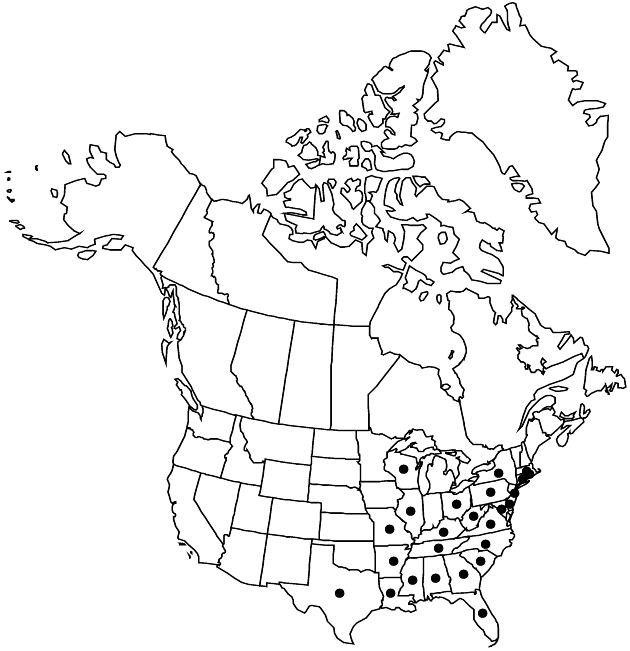Eupatorium hyssopifolium
Sp. Pl. 2: 836. 1753.
Perennials, 50–100+ cm. Stems (from short caudices or rhizomes) single, sparsely branched distally, pubescent throughout. Leaves usually opposite or whorled (distal sometimes alternate, spreading or horizontal); simple, sessile; blades 3-nerved from bases (laterals sometimes weak), lance-linear, lance-oblong, or linear, 20–60 × 2–15 mm (lengths mostly 6–40 times widths), bases cuneate, margins entire, laciniate-serrate, or serrate, apices acute, faces scabrous (at least abaxial). Heads in corymbiform arrays. Phyllaries 8–10 in 2–3 series, elliptic to oblong, 1.5–5 × 1–1.5 mm, apices obtuse to acute (not mucronate), abaxial faces pubescent throughout (more densely distally). Florets 5; corollas 3–3.5 mm. Cypselae 2–3 mm; pappi of 20–30 bristles 3.5–4 mm.
Distribution

Ala., Ark., Conn., Del., Fla., Ga., Ill., Ky., La., Mass., Md., Miss., Mo., N.C., N.J., N.Y., Ohio, Pa., R.I., S.C., Tenn., Tex., Va., W.Va., Wis.
Discussion
Varieties 2 (2 in the flora).
Eupatorium hyssopifolium includes both diploid and polyploid cytotypes and presents a complex situation taxonomically. The diploids are placed here in var. hyssopifolium, which also includes polyploids and is characterized by relatively narrow leaves. Variety laciniatum has broader leaves and molecular data suggest that it arose through hybridization between var. hyssopifolium and E. serotinum; the name E. torreyanum has been applied to plants of similar morphology, but these are hybrid derivatives of E. serotinum and E. mohrii. It has also been suggested that var. hyssopifolium has hybridized with E. album var. album to form E. saltuense, and with diploids of E. linearifolium to form polyploid populations included here under E. linearifolium. Eupatorium hyssopifolium is characterized by a tendency for the leaves to be whorled, in 3s and 4s, and for axillary buds to produce leaves without expansion of shoots; the combination of whorled leaves and suppressed axillary shoots gives the nodes a somewhat tufted or verticillate appearance.
Selected References
None.
Key
| 1 | Leaves mostly linear, 2–5 mm wide, margins usually entire or obscurely serrulate | Eupatorium hyssopifolium var. hyssopifolium |
| 1 | Leaves mostly lance-linear to lanceolate, 5–15 mm wide, margins usually laciniately toothed | Eupatorium hyssopifolium var. laciniatum |
"fine" is not a number.